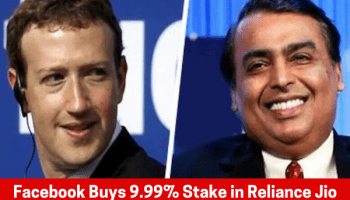In a marketplace dominated by budget-conscious consumers, how can your startup rise above the competition? Whether you’re offering business software subscriptions or the latest consumer gadget, this conundrum plagues even the most experienced business leaders.
With limited funding and a need for quick returns, most startups cannot afford the slow road to generating sales and driving revenue. To add to this, missteps in your initial pricing strategies could push away your target audience – or worse, trap your startup in a profitless cycle that’s hard to break. It’s a delicate tightrope walk that demands precision.
Yet, pricing is more than just a means to cover costs and generate profits. It’s an influential instrument that can help set your brand apart and close more deals, offering you a much-needed leg-up in the gruelling journey of startup success.
Understanding Price-Sensitive Markets
Consumers are motivated to minimize spending over other purchase decision criteria in price-sensitive markets. As Investopedia puts it, “Price sensitivity is the degree to which demand changes when the cost of a product or service changes.” Basically, as the price of a given product goes up, demand for it is likely to drop.
While this is true in most markets, budget-sensitive sectors are even more susceptible to these fluctuations. Some examples of such industries include:
- Commodities – Low-priced items that have many substitutes. For example, some customers are unwilling to pay a few extra cents for a direct-to-consumer startup’s package of vitamins when generic brands have the same ingredients.
- High-priced items – Products that command a significant portion of a buyer’s budget, such as consumer electronics and plane tickets, are generally more price sensitive.
- Competitive markets – In a saturated market, including many B2B categories, buyers armed with reference prices may readily switch suppliers for better deals, given comparable product offerings.
The challenge here is not simply to offer lower-priced goods. It’s to provide high-value products at a price that appeals to the budget-conscious buyer. In these types of markets, well-thought-out pricing strategies can be your startup’s lifeline, giving you a clear competitive advantage and helping you flourish where others might merely survive.
Strategy 1: Penetration Pricing

The essence of penetration pricing lies in setting a lower initial price to secure high sales and market share quickly, before gradually hiking up the price. It’s a daring, aggressive move aimed at disrupting the market and gaining a solid footing.
Take a page out of Xiaomi’s playbook. The Chinese electronics giant made waves with high-spec smartphones priced significantly lower than those of its competitors. This penetration pricing strategy allowed Xiaomi to quickly seize a substantial market share, especially in developing countries filled with budget-sensitive consumers.
This approach, however, can be a double-edged sword. While penetration pricing can lead to rapid market capture, it necessarily means absorbing lower initial profits.
Strategy 2: Economy Pricing
Economy pricing is a model that operates on low operating costs to deliver products at lower prices than competitors.
It’s an attractive strategy if you have the capability to produce or acquire your products cheaply while preserving acceptable quality, which is often the case with cloud-based tech.
Take inspiration from Costco, the wholesale behemoth that attracts budget-conscious customers by offering a limited number of products at significantly lower prices than competitors. If you’re able to keep a lid on costs, the economy pricing model can result in high-volume sales, albeit with thin profit margins.
Strategy 3: Bundle Pricing
Bundle pricing is the art of packaging multiple products together and offering them at a lower combined price than the total of the individual prices. This strategy encourages customers to spend more, increasing overall sales and showcasing your product range.
Think of Microsoft’s success with this strategy. By bundling Word, Excel, and PowerPoint in its Office suite, Microsoft has encouraged customers to spend more upfront, increasing sales and showcasing its product range.
However, proceed with caution. The bundle pricing model can sometimes lead to a perception of lower value if not executed strategically.
Strategy 4: Value-Based Pricing
Value-based pricing revolves around determining prices based on the perceived worth of a product, in the eyes of buyers. The idea is to communicate and deliver value that aligns with the needs and desires of your customers.
This approach holds significance for startups that offer products or services where the perceived value can be quite high. By setting prices in accordance with this perceived value, you have the potential to achieve significant profitability.
However, implementing value-based pricing necessitates a deep understanding of your customer base, which many early-stage startups struggle with. It is crucial to know your target buyer personas well, what motivates them, and what their spending thresholds are. Any misstep in this regard can result in pricing that fails to meet customer expectations, leading to a drastic drop in sales.
Strategy 5: Psychological Pricing
Psychological pricing is all about playing to the customer’s perception. It involves techniques such as charm pricing (e.g., pricing a product at $9.99 instead of $10) that make a product appear less expensive, influencing the customer’s buying decision.
This is by far one of the most popular pricing strategies since it can easily be combined with the others mentioned in our list. In fact, it’s estimated that 90% of prices end in either a nine or a five.
This strategy can be useful for startups – and just about any other business – as it often leads to improved sales. However, it requires careful strategy execution to ensure it doesn’t backfire. It may even come across as patronizing when dealing with extremely high-ticket items since buyers are unlikely to fall for trickery when there is a lot of money on the line.
Selecting An Appropriate Pricing Strategy
Your pricing strategy can make or break your startup in a budget-sensitive market. It’s an integral part of your marketing mix, touching on aspects like product positioning, distribution channels, and promotion. When choosing a pricing model, take the time to consider your cost structure, the price sensitivity of your target customer, and the pricing approaches adopted by your competitors.
However, don’t just copy your competitors’ pricing; be strategic and creative. Remember, price is an opportunity to differentiate.
- Think long-term. Your initial pricing may aim for rapid growth, but make sure it can be viable for profitability too. Work the numbers and run projections to ensure your pricing strategy is sustainable.
- Keep your finger on the pulse. Don’t rest on your laurels once you’ve implemented initial pricing. Markets and customer perceptions evolve. Regularly assess pricing effectiveness through tracking key metrics like sales volume, profit margins, and market share. But don’t obsess over minor fluctuations – keep the big picture in mind.
- Listen to customer feedback. If you find many customers perceive your product as overpriced or underpriced, be ready to course-correct. Pricing should meet both customer perception and company goals.
- Consider running A/B tests with different pricing tiers. Real-world data can provide valuable insights to fine-tune your strategy over time, especially as you evolve to find product-market fit. Just ensure pricing experiments don’t confuse customers or dilute your branding.
Final Words
Thriving in a budget-sensitive market demands a deep understanding of your customers and a strategic pricing approach. As a startup, you might not have the luxury to compete on brand recognition or extensive product range. However, by learning from successful companies like Xiaomi, Costco, and Microsoft and applying a suitable pricing strategy, you can attract budget-conscious customers and drive business growth.
Once again, keep in mind that pricing is more than numbers on a tag. It’s a strategic tool that can unlock your startup’s potential and put you on the path to success. Use it wisely, adapt it as needed, and watch your business soar.
Read Also:




























